It's all beginning right now. My love for gardening is taking a new turn with the world of herbs. Bertie here, and after countless hours of research, my friend Sally and I are embarking on the journey to create our very own lush, fragrant herb garden.
We're starting with staples like basil and rosemary, and branching out to others like thyme and cilantro. I've done a ton of research that I'm going to share with you as we journey along in our "herbing" adventure!
We'll learn the ropes of caring for our plants, transforming us from beginners to budding herbal enthusiasts. And it doesn't stop there; I'll share the joy of weaving these aromatic treasures into our meals. AND, we'll explore medicinal herbs in future articles as well!
No complicated jargon, just us, learning and growing together. So, let's grab our gardening gloves and embark on this adventure with an open heart and soil-ready hands to have our own herbs.
The most exciting part? We're kicking our herb garden off indoors during the early spring, which will give our tiny seeds a head start before they transition to the great outdoors in late spring.
By the way, check out our first article that is about initial planning of an herb garden.
Here's to our herb gardening journey, where every little success is ours to celebrate! 🌿
Key Takeaways
- Most herbs need about six hours of sunlight and good air circulation to thrive, but there are adaptable options for different lighting conditions.
- Starting our herb garden with easy-to-grow herbs like basil, cilantro, and sage is great for us beginners, and we can pick between planting seeds or buying seedlings based on our preferences and the specific herb’s growing conditions.
- Most herbs can be grown in varying spaces using containers or garden beds, and integrating them into cooking adds freshness and flavor to a diverse array of dishes.
Table of Contents
Here’s what you can expect from this guide:
- Choosing the Right Location for Your Herb Garden
- Planning Your Herb Garden Layout
- Selecting Your Starter Herbs
- Soil Preparation and Improvement
- Planting Herb Seeds vs. Buying Seedlings
- Essential Tools and Supplies for Herb Gardening
- Companion Planting and Pest Control
- Expanding Your Herb Repertoire
- Troubleshooting Common Herb Garden Issues
- Integrating Herbs into Your Cooking
- Conclusion
- Frequently Asked Questions
Choosing the Right Location for Your Herb Garden
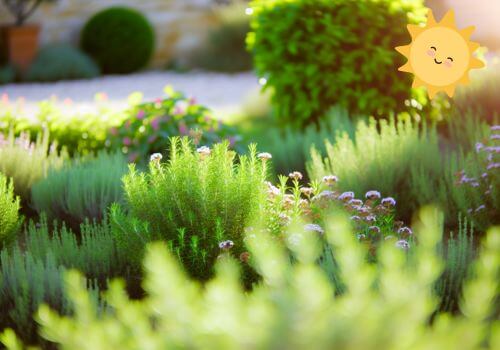
So where should you plant your herb garden? Well, most herbs, like basil, rosemary, sage, and thyme, require at least six hours of full sun daily to thrive.
But there are exceptions. Chives, coriander, and mint are more versatile and do well under either full sun or partial sun conditions, as long as their daily sunlight needs are met.
And then there’s chervil (also called French parsley) which needs only four to six hours of partial sun every day.
Here are some pics of my own little backyard space - some "before" images!
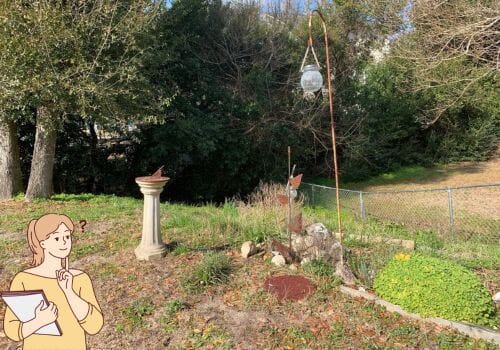
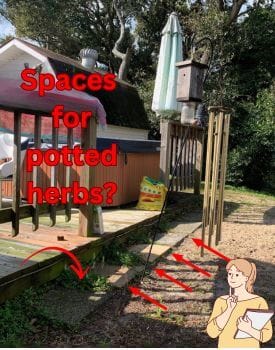
My backyard space!
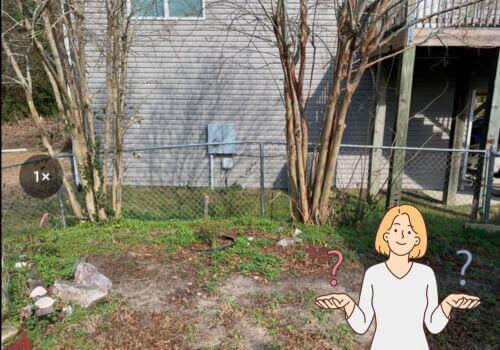

Different views of my small backyard space!
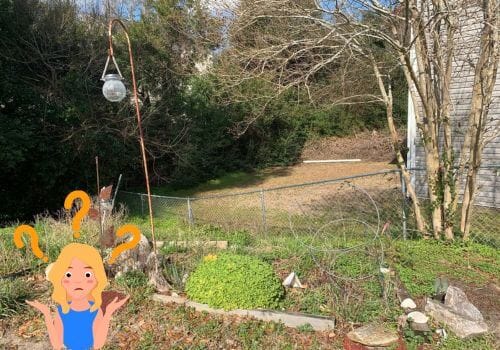
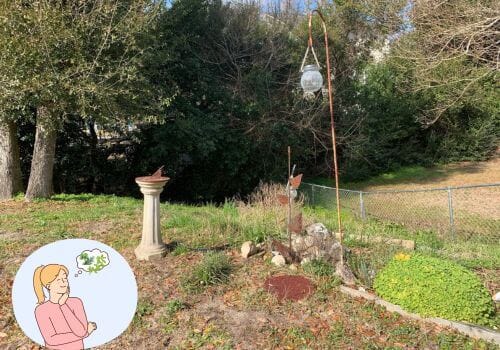
Hmmm! In the planning stages!
But light isn’t the only factor to consider. Good air circulation is necessary to prevent diseases in herbs. Stagnant air can foster a build-up of harmful gases leading to poor plant health.
Proper air movement prevents the accumulation of dust and debris, which can inhibit photosynthesis and overall plant health. Also, adequate air circulation is crucial for healthy root function, allowing roots to access oxygen and avoid stress-related failures.
So, when choosing the location for sowing herbs, factor in accessibility, sunlight availability, and space considerations, including convenience for harvesting and tending to the plants.
I decided on a small space in my backyard that gets morning sun. This is where I'll put my containers I plant my herbs in.
Sally and I went yard sale shopping hunting for all sizes and shapes of pots well use. What a fun day we had! And some of them I already have on hand.
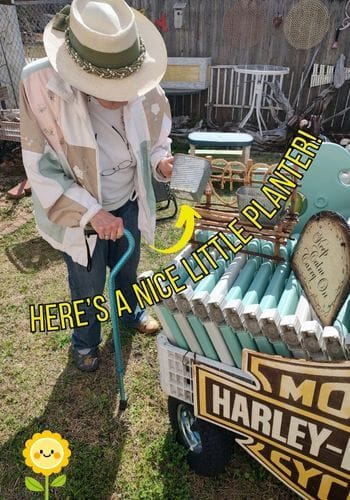
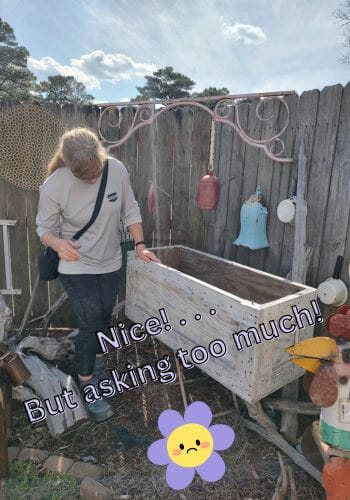
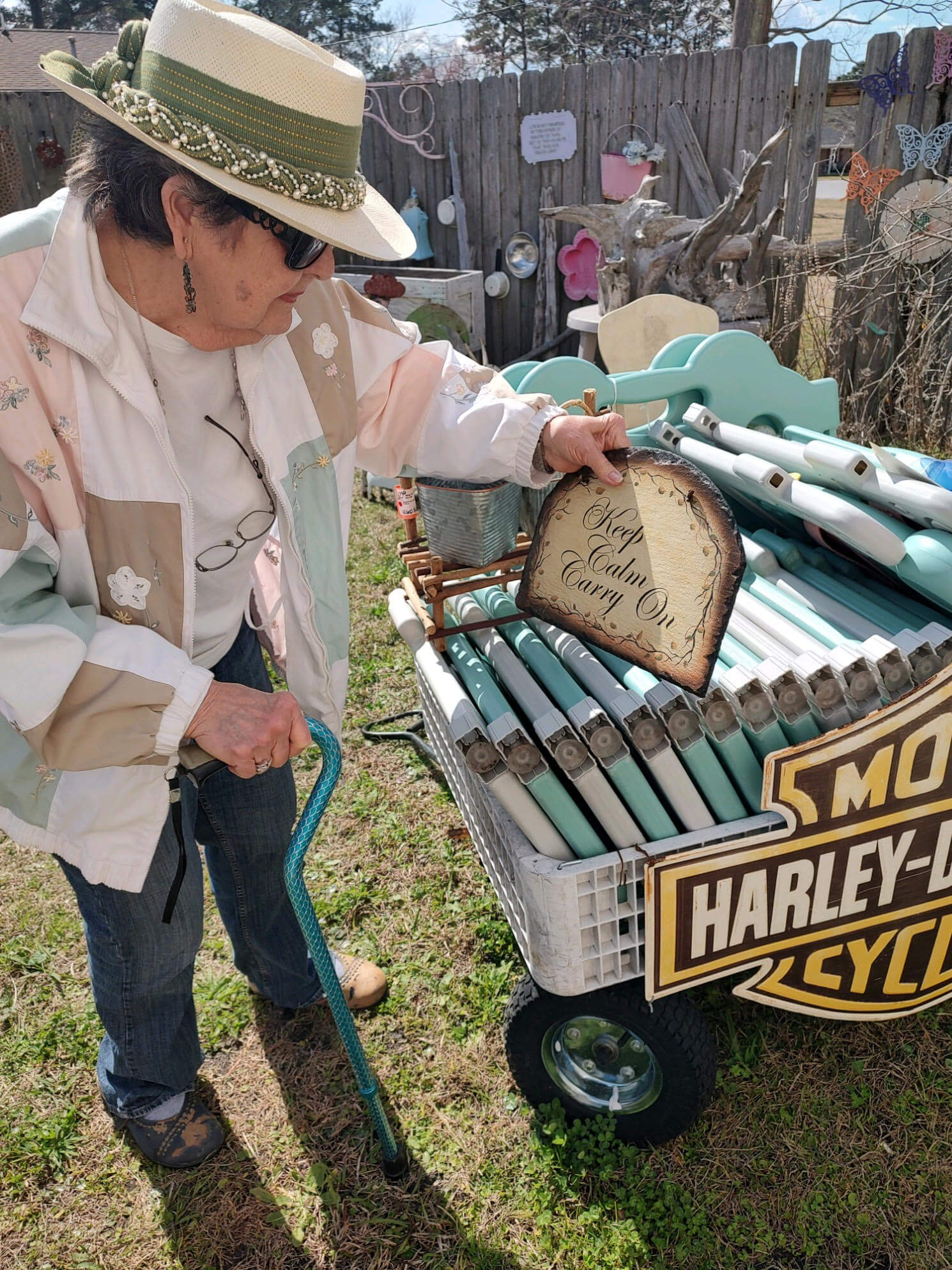
Bertie and Sally Thrift Store Hunting!
Here are some images I took of the containers we'll use for direct sowing of both seeds and seedlings when they are ready to move outdoors.
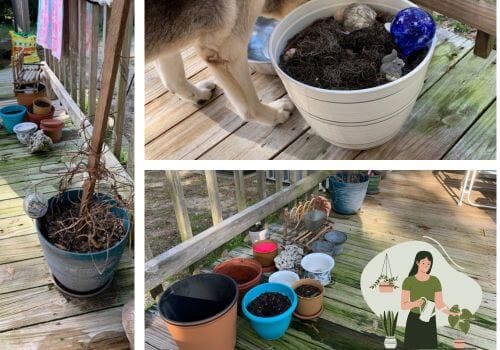
Planning Your Herb Garden Layout
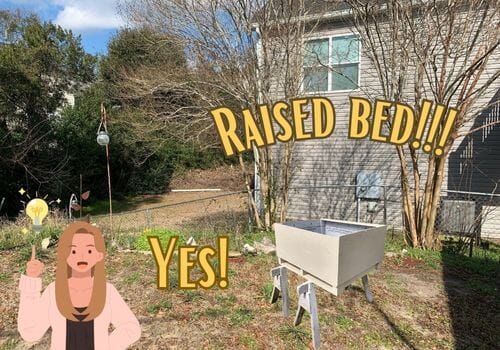
Now, let’s talk about the layout. How you organize your herb garden can have a big impact on its success. You want to:
- Select a sunny area close to your kitchen for convenience and maximum sunshine exposure. (I don't have such a space.)
- Incorporate elements like stepping stones for easy access during maintenance and harvesting. (Yep, this will help!)
- Consider different garden designs, such as a formal garden with symmetrically arranged beds around a central feature or a simple patch located conveniently near your kitchen door. (Since my space is so small, not much room for any type of designing here.)
- If your space is small like mine, you really don't have much choice as to layout but you can make it attractive and unique to you! (Of course we can!)
It’s also important to consider the size and growth patterns of your herbs outdoors. Here are some tips for planting and arranging your herbs:
- Plant robust herbs like sage and rosemary in areas with room for expansion. From experience, I know rosemary grows into a huge bush in several years so allow plenty of room! I plan to put my rosemary in a spot outside my raised bed directly in the ground.
- Use varying herb heights, textures, and colors to create visual interest and contrast. It's important here to read the seed packets or the little markers that comes with potted plants to see how high they will grow. (Are you getting excited? I am!)
- Consider growing herbs in large clay pots or interspersing them with flowers and other plants for added visual appeal. (OK, I'll see what I can do with this.!)
You can also use containers and a raised bed, which can be a fun and cost-effective way to start an herb garden if you can use recycled stuff.
This is what Sally and I are going to do. She found our raised bed on the side of the road! With a little elbow grease, a hammer and a paint brush, this is what our future raised bed looks like! We're going to paint "Bertie's Herbs" on it just for fun!
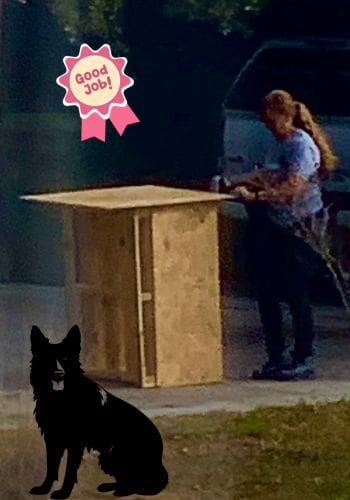
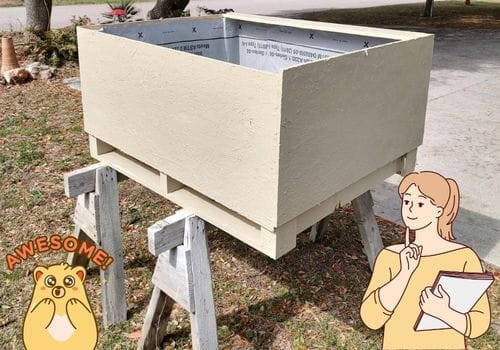
Just check out these other containers I found!
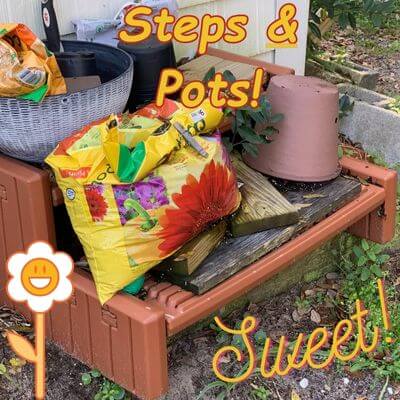
I may even use these old hot tub steps to put some of the container on. We'll see how it shapes up!
Selecting Your Starter Herbs
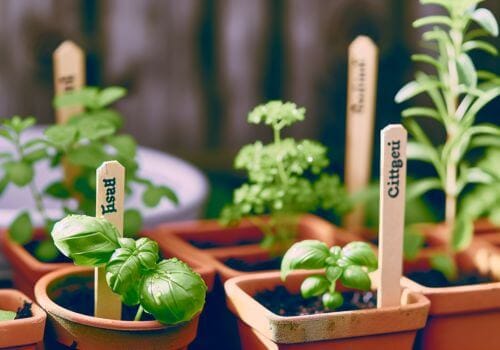
One of the most exciting parts of starting an herb garden is choosing your herbs. If you’re a beginner, I recommend starting with the easiest herbs:
- Basil: a popular culinary herb known for its ease of growth from seed and its preference for hot, dry weather with plenty of sunshine.
- Cilantro: seeds are great for beginners as well. They grow well from seed and are ideal for planting in cooler parts of the year.
- Sage: a low-maintenance herb that can grow in full sun or partial shade, and in both hot and cooler temperatures.
Here are the ones we are going to start with:
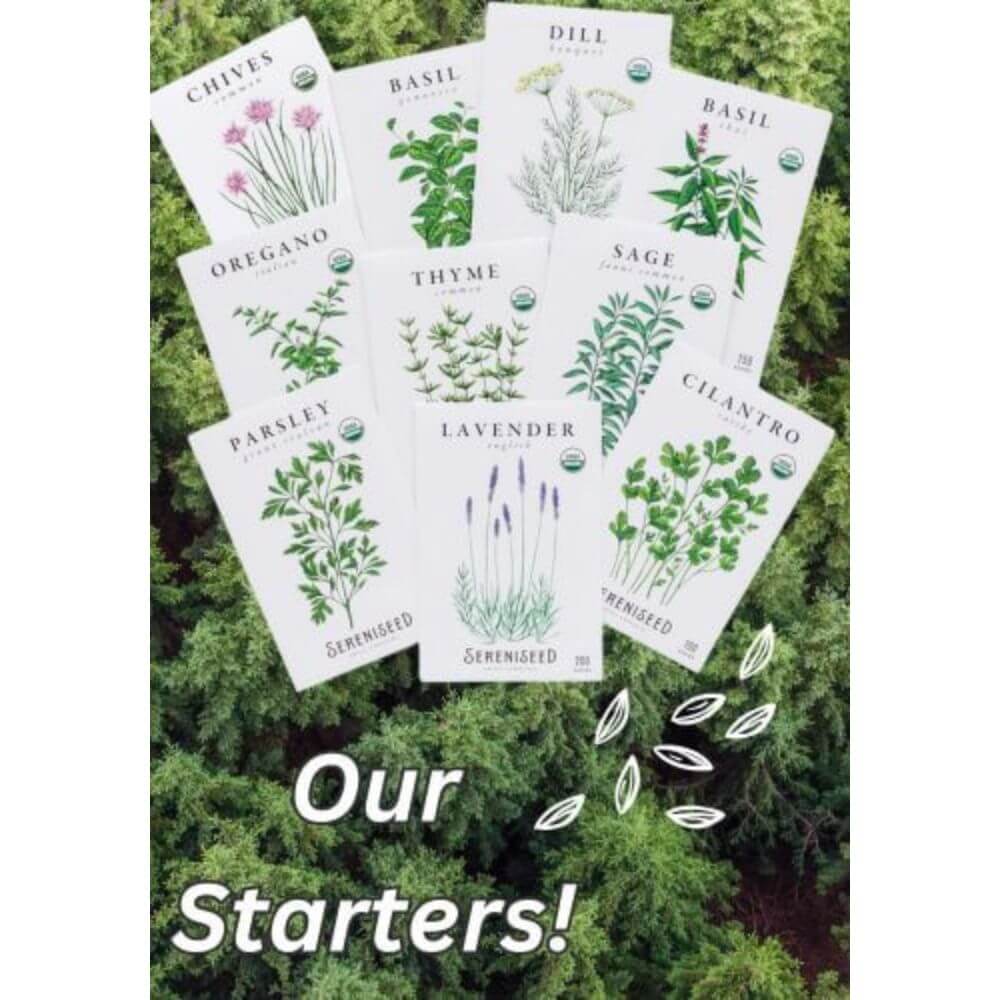
Sereniseed Certified Organic Herb Seeds
100%: non-GMO, open pollinated, trusted varieties
I ordered seed packets from Amazon. It was a convenient way to get a variety of seeds delivered right to my doorstep.
When selecting herb plants, choose the herbs with vibrant, green leaves, free from pests or disease. Make sure they are not root-bound for a healthy start. More about that in our next article.
Soil Preparation and Improvement
Preparing your soil is an important step in setting your herb garden up for success.
According to a WeatherSTEM lesson, the ideal soil for herb gardening is loam, which consists of 20 percent clay, 40 percent silt, and 40 percent sand, as it provides a soil surface for balanced aeration, drainage, and nutrient retention.
However, if you’re dealing with sandy soil like I am, and I am using a small raised bed and planting pots, Iowa State University states "Raised bed soils should be light and well-drained. An excellent soil mix can be prepared by mixing equal parts topsoil, organic matter (well-rotted manure, compost, or peat), and coarse sand. "
I haven't really decided what I am going to use in my raised bed. I may get something premixed, or not. That's for another article when I'm actually ready to plant outside.
To ensure your future fresh herbs have the necessary nutrients for healthy growth, soil tests can determine nutrient deficiencies and inform the appropriate addition of fertilizers.
You can get your soil tested if you wish. The soil pH can be managed using materials like limestone or sulfur to maintain a range between 5.5 and 7.5.
To start out, I am going to use a premix (Rio Hamza Trading Planting Mix from Amazon) for my seeds. It’s convenient and ensures my herbs get off to a good start. I've never tried this particular brand before so this is an experiment to see how well it performs.

Planting Herb Seeds vs. Buying Seedlings
You might be wondering whether it’s better to plant herb seeds or buy seedlings when you start an herb garden. Good question!
Well, both methods have their pros and cons. When you sow seeds of herbs, you have full control over growing conditions, including guaranteeing an organic process and the selection of fertilizers and pest control.
Plus, it allows you to experience the freshest possible herbs, with the ability to cut them right when needed. It’s also more cost-effective compared to purchasing fresh or dried herbs from the store. Growing a variety of herb seeds can be exciting to try out in cooking!
However, some herbs are challenging to start from seed. For example, lavender has a low germination rate and is slow to grow, making it impractical to start from seed. (We're going to try, though, as lavender came with our packets shown above.)
Rosemary has many varieties and is typically easier to start from a cutting or nursery-bought plant than from seeds. So, for some herbs, purchasing seedlings can offer a head start and is often more practical.
We may experiment with both as we go along and will definitely let you know what we decide and how it is working in future articles.
Essential Tools and Supplies for Herb Gardening
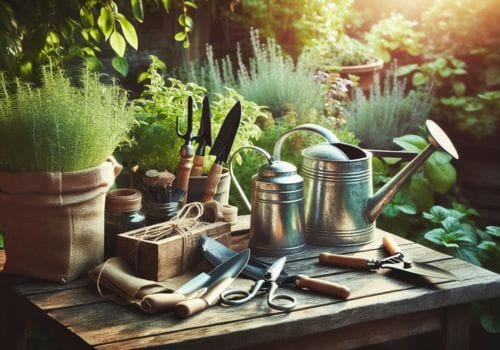
Equipping yourself with the right tools and supplies is good for starting and maintaining an herb garden. Some tools include:
A soil knife for various gardening tasks including planting seeds and moving soil. (I'm getting the Radius Garden Root Slayer from Amazon.)
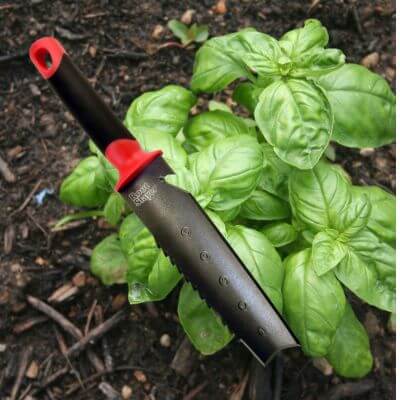
Mini pruners and herb scissors for harvesting (I am ordering a Mr. Pen from Amazon.)
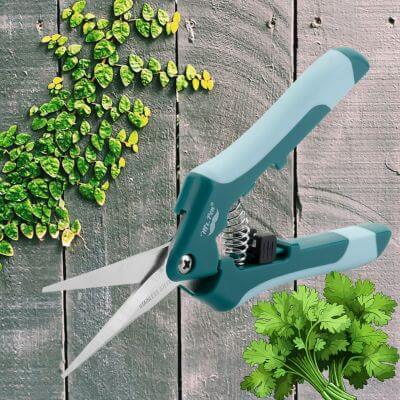
A mini dibber for planting seeds. (To be honest, I'd never heard of one! LOL! I'm just using my hands, but this is a nice tool if you like.)
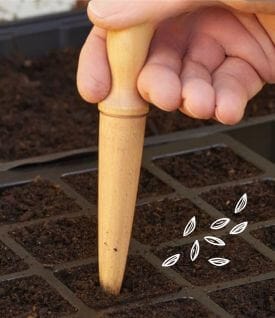
I prefer to buy tools individually rather than in a set- the selections are better in my opinion.
You’ll also need:
- A watering can with a long, narrow neck for precise watering, and a comfortable handle to prevent wrist strain. (Check!)
- Containers for your herb garden. They should be at least 6 inches deep, ideally a foot deep, and at least a foot wide. (Check!)
- A sturdy planter box with adequate drainage is important for healthy root development and preventing root rot. (Check!)
For sure, you probably have some of these already on hand. Or you can find them cheap at thrift stores or yard sales. Since this is my first experience with herb gardening, I didn't have some of the smaller tools I'll need. (I can't wait to see our herbs grow! Send me pictures of your growing herbs!)
Companion Planting and Pest Control
Another exciting aspect of herb gardening is the concept of companion planting. This practice not only enhances the growth of certain plants but also naturally deters pests, attracting beneficial insects that aid in pest control within the garden.
For example, many herbs, including culinary herbs such as:
- basil seeds
- rosemary
- lemon balm
- chives
- marigolds
- lavender seeds
Companion planting can repel a variety of pests while also offering protective benefits to nearby vegetables and other plants.
Nasturtiums serve as a trap crop to attract aphids away from other plants, while plants like yarrow and marigolds attract beneficial predatory insects, helping to maintain a balanced ecosystem in the garden.
Individual herbs offer specific benefits such as fennel repelling snails and slugs, borage warding off tomato hornworms, and anise hyssop attracting pollinators and beneficial beetles, making them ideal companion plants for various garden crops.
Wow! So much to learn! This is really exciting!
Expanding Your Herb Skills and Knowledge
Once you’ve mastered the basics, why not expand your herb repertoire? There are countless fresh herbs to explore, each with its unique flavors and uses. There's culinary herbs and medicinal herbs, as well. We'll learn all of that throughout our journey.
Let’s take Thai basil, for instance. With its sweet and slightly spicy taste, Thai basil is a distinctive herb for Thai dishes such as stir-fries, curries, and soups. And it’s not just for Thai cooking. Thai basil can pair with meats like chicken, pork, and beef, and enhance salads, spring rolls, and noodle dishes.
Another herb to consider is lemon balm. Its lemon-scented leaves provide a citrusy and fresh flair to a variety of dishes, including salads, cold drinks, seafood dishes and baked treats.
I will also be starting with a few other herbs, including:
- Genovese Basil
- Thai Basil
- Chives
- Cilantro
- Dill
- Lavender
- Oregano
- Parsley
- Sage
- Thyme
Each has its own unique characteristics add flavor and culinary uses, which I’ll cover in more detail later. And some of these are annual herbs and some are perennial herbs. The parsley packet even had biennial! That's news to me!
We'll get into those details in a future article. So many herbs to explore!
Troubleshooting Common Herb Garden Issues
Like any new venture, you’re bound to encounter some challenges along the way. But don’t worry, we'll find solutions!
One common issue is bolting, which is when herbs flower and go to seed too quickly. To avoid early flowering, you can plant bolt-resistant varieties of cilantro, such as Calypso. Sowing Leisure cilantro seeds every 3 weeks can also ensure a continuous supply.
When you start an herb garden, another common challenge is low germination rates. Some herbs, like garlic, can be effortlessly included in an herb garden as they are easy to plant and are relatively low maintenance.
And keep in mind, for herbs with a low germination rate, such as bay leaves, it’s often more practical to buy plants instead of starting from seed.
Integrating Herbs into Your Cooking
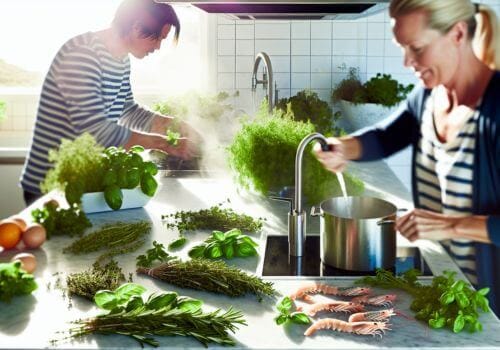
The best part of having your own herb garden? Fresh herbs at your fingertips, ready to enhance your cooking! Fresh herbs can be used in countless ways. For instance, you can:
- Infuse water with Rosemary and Ginger for a refreshing drink
- Bake a Rosemary Focaccia bread
- Enhance dishes such as Herbed Feta Dip and Syrian Green Beans
Don’t be afraid to get creative with your fresh herbs. Here are some ideas to inspire you:
- Innovate traditional guacamole by adding basil and pine nuts
- Create a Blueberry, Basil and Goat Cheese Pie
- Make Cauliflower Dill Kugel for a herbaceous touch
The possibilities are endless! (I really love to use rosemary and basil in a crock pot chicken recipe!) Having our own herbs will be fantastic!

Embarking on an herb garden journey with us, Bertie and Sally, by your side is not just simple, it's a whole lot of fun too!
Together, we've navigated through choosing the ideal spot, selecting the perfect starter herbs, prepping our soil, and broadening our herb collection.
We're sure we will face a few garden hiccups along the way, but with some quick fixes, our green haven will keep flourishing. Our adventure is filled with learning, growth, and the satisfaction of nurturing our plants. 🌿🪴
It will be amazing how a little patience and care can transform any space into a lush, aromatic garden that not only beautifies our homes but also elevates our meals and wellbeing.
So, why wait any longer? Continue with us as we guide you into turning a tiny patch or a couple of pots into your very own vibrant herb garden. It's time to add that special touch to your cooking and your home! 👩🌾
Our future articles will cover how to harvest herbs, indoor herb gardens, favorite herb inspired recipes, and so much more!
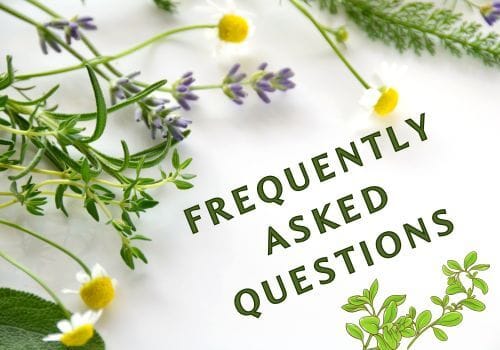
I know there's gotta be many questions you may have. Here are some of the most asked we found in our research. By all means, send us your questions in a comment below, and we'll do our best to find the answers for you! (You'll need to subscribe first, though, to be able to send questions or comment.)
How do you start an herb garden for beginners?
Find a sunny spot with well-draining soil, choose your favorite herbs, water properly, prune as needed, and to create a successful herb garden. And don't forget to enjoy the process!
What’s the best location for an herb garden?
Most herb plants require at least six hours of full sun daily to thrive. Good air circulation is also necessary to prevent diseases in herbs.
What time of year should I start an herb garden?
Start a herb garden indoors with seeds about 6-8 weeks before the season's last frost, and wait until all danger of frost has passed before planting basil seeds or other seedlings outdoors. This is typically when the soil moisture and temperatures are in the 60s and 70s.
What herbs are good for beginners?
Basil, sage, thyme, catnip, dill, calendula, chamomile, oregano, and mint are some of the best herbs to start a herb garden with. Additionally, rosemary can be a great addition, but it should be grown in its own large container as it can be invasive. Same with mint!
How do I prepare the soil for an herb garden?
The ideal soil for herb gardening is loam, which consists of 20 percent clay, 40 percent silt, and 40 percent sand.
Should I plant herb seeds or buy seedlings?
Both methods have their pros and cons. Seeds offer full control over growing conditions and are more cost-effective, while herb plants offer a head start and are often more practical for certain herbs.
What is the best layout for an herb garden?
The best layout for an herb garden (if you have the space) is a simple formal design with a geometric shape, such as a circle or square, divided into equal sections and filled with similar or complementary plants. It's easier than it looks!
What is the difference between culinary herbs and medicinal herbs?
Culinary herbs are used in food preparation and seasoning, while medicinal herbs are used for their therapeutic effects. We plan to work with both in our herb garden.
What's the difference between annual herbs and perennial herbs?
Simply put, annual herbs must be planted every year and perennial herbs will come back.
Don't forget to read our first article "How to Plan an Herb Garden to Elevate Your Culinary Space."
Thanks for stopping by our bee hive! We hope you've enjoyed our Herb Gardening article #2 and will join us on this exciting journey. Send us photos of your garden as you travel with us! We'd love to see your progress!

Bertie
Before you leave, if you haven't already done so, please subscribe so you will be the first to see reviews you can rely on.


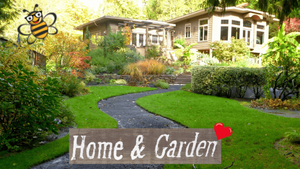






Member discussion